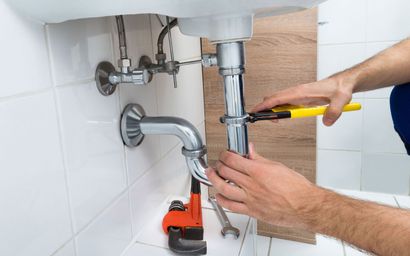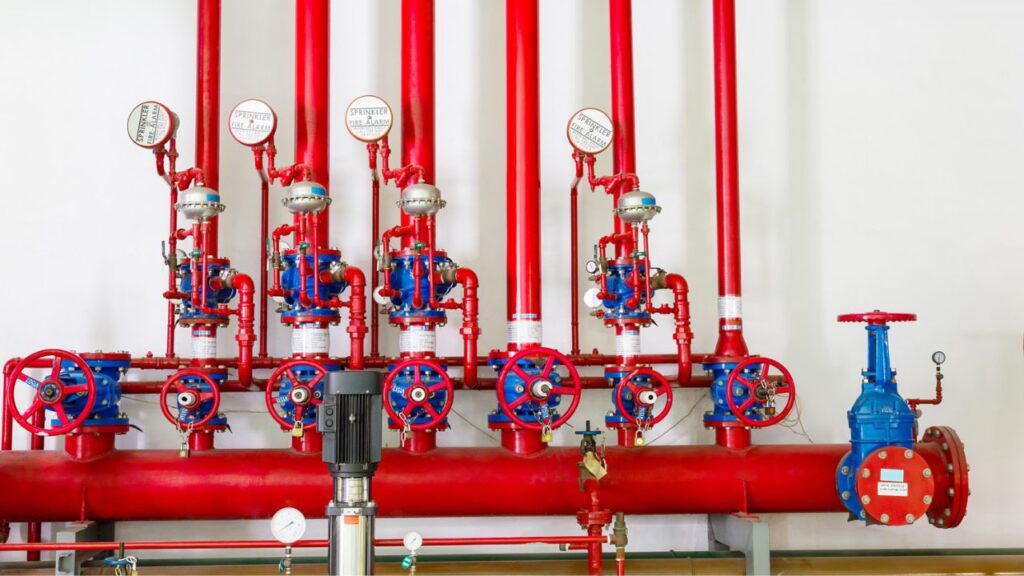A Closer Look at The Layout of Your House's Plumbing System
A Closer Look at The Layout of Your House's Plumbing System
Blog Article
The article author is making a number of good points related to Exploring Your Homes Plumbing Anatomy overall in the article directly below.

Comprehending just how your home's pipes system works is vital for every house owner. From delivering tidy water for drinking, cooking, and showering to safely eliminating wastewater, a well-maintained pipes system is essential for your family members's health and convenience. In this comprehensive guide, we'll discover the elaborate network that composes your home's plumbing and deal tips on maintenance, upgrades, and managing usual issues.
Introduction
Your home's pipes system is more than just a network of pipelines; it's a complex system that guarantees you have accessibility to tidy water and efficient wastewater elimination. Knowing its elements and just how they work together can assist you protect against costly repair services and ensure everything runs smoothly.
Fundamental Elements of a Plumbing System
Pipes and Tubes
At the heart of your pipes system are the pipelines and tubing that bring water throughout your home. These can be constructed from different materials such as copper, PVC, or PEX, each with its benefits in terms of toughness and cost-effectiveness.
Components: Sinks, Toilets, Showers, and so on.
Fixtures like sinks, bathrooms, showers, and bath tubs are where water is made use of in your home. Comprehending exactly how these components attach to the plumbing system assists in detecting troubles and planning upgrades.
Valves and Shut-off Factors
Shutoffs regulate the circulation of water in your pipes system. Shut-off valves are important throughout emergency situations or when you require to make repairs, enabling you to isolate parts of the system without disrupting water circulation to the whole residence.
Water Supply System
Main Water Line
The main water line links your home to the community supply of water or a personal well. It's where water enters your home and is dispersed to numerous components.
Water Meter and Stress Regulatory Authority
The water meter measures your water usage, while a pressure regulator ensures that water moves at a secure stress throughout your home's plumbing system, avoiding damage to pipelines and components.
Cold Water vs. Warm water Lines
Comprehending the distinction in between cold water lines, which provide water straight from the main, and warm water lines, which bring heated water from the hot water heater, assists in fixing and planning for upgrades.
Water drainage System
Drain Pipes Pipeline and Traps
Drain pipes lug wastewater far from sinks, showers, and bathrooms to the sewer or sewage-disposal tank. Traps prevent sewer gases from entering your home and additionally catch particles that might trigger blockages.
Air flow Pipelines
Ventilation pipelines enable air into the water drainage system, avoiding suction that could slow down drainage and create traps to vacant. Appropriate ventilation is crucial for preserving the honesty of your pipes system.
Relevance of Appropriate Drainage
Making sure correct drain prevents back-ups and water damage. Regularly cleansing drains pipes and keeping catches can avoid costly fixings and prolong the life of your pipes system.
Water Heater
Sorts Of Hot Water Heater
Water heaters can be tankless or traditional tank-style. Tankless heating systems heat water as needed, while tanks save heated water for immediate usage.
Upgrading Your Pipes System
Reasons for Upgrading
Updating to water-efficient components or replacing old pipelines can improve water top quality, reduce water expenses, and raise the worth of your home.
Modern Pipes Technologies and Their Benefits
Check out innovations like clever leakage detectors, water-saving commodes, and energy-efficient water heaters that can conserve cash and decrease ecological influence.
Price Considerations and ROI
Determine the ahead of time expenses versus lasting savings when considering plumbing upgrades. Lots of upgrades pay for themselves with decreased energy expenses and less repairs.
Just How Water Heaters Link to the Pipes System
Recognizing how hot water heater attach to both the cold water supply and warm water circulation lines helps in diagnosing problems like not enough warm water or leaks.
Maintenance Tips for Water Heaters
On a regular basis flushing your hot water heater to eliminate debris, examining the temperature setups, and inspecting for leaks can extend its life expectancy and improve energy effectiveness.
Typical Pipes Concerns
Leakages and Their Causes
Leaks can occur because of maturing pipes, loose fittings, or high water pressure. Dealing with leaks quickly avoids water damage and mold growth.
Clogs and Clogs
Obstructions in drains pipes and commodes are usually brought on by purging non-flushable things or a build-up of oil and hair. Making use of drainpipe displays and bearing in mind what goes down your drains can avoid clogs.
Signs of Plumbing Problems to Expect
Low tide stress, sluggish drains pipes, foul odors, or uncommonly high water bills are signs of possible pipes troubles that need to be dealt with promptly.
Plumbing Upkeep Tips
Routine Assessments and Checks
Arrange annual pipes examinations to capture problems early. Search for signs of leakages, deterioration, or mineral accumulation in faucets and showerheads.
Do It Yourself Upkeep Tasks
Basic tasks like cleaning tap aerators, checking for toilet leaks utilizing dye tablet computers, or shielding exposed pipes in chilly climates can prevent significant plumbing issues.
When to Call a Specialist Plumber
Know when a pipes problem requires professional know-how. Attempting intricate repair services without appropriate knowledge can cause more damages and higher repair prices.
Tips for Decreasing Water Usage
Straightforward practices like fixing leaks promptly, taking much shorter showers, and running full lots of washing and dishes can preserve water and lower your energy expenses.
Eco-Friendly Plumbing Options
Take into consideration sustainable pipes materials like bamboo for floor covering, which is durable and environmentally friendly, or recycled glass for kitchen counters.
Emergency situation Preparedness
Steps to Take Throughout a Pipes Emergency situation
Know where your shut-off valves are located and just how to shut off the water in case of a burst pipeline or significant leakage.
Significance of Having Emergency Situation Contacts Convenient
Keep call info for local plumbing professionals or emergency situation services easily offered for quick action during a pipes situation.
Environmental Influence and Conservation
Water-Saving Components and Appliances
Setting up low-flow taps, showerheads, and bathrooms can dramatically decrease water use without sacrificing efficiency.
Do It Yourself Emergency Fixes (When Suitable).
Temporary repairs like making use of duct tape to patch a leaking pipeline or placing a container under a trickling faucet can lessen damages until an expert plumbing professional arrives.
Final thought.
Recognizing the anatomy of your home's plumbing system encourages you to maintain it efficiently, conserving money and time on repairs. By following regular maintenance regimens and remaining informed regarding contemporary pipes technologies, you can ensure your plumbing system runs successfully for years to come.
HOW YOUR PLUMBING SYSTEM WORKS
Which Pipes Do What?
Blue lines = fresh water supply entering the building Red lines = hot water supply entering the building Grey lines = pipes carrying waste away from the building and venting pipes carrying gases away from the building (through the roof) YOUR MAIN PLUMBING SYSTEMS
There are two main plumbing systems that support your home s basic plumbing needs one that brings clean water into your home, and one that sends dirty water away from your home. Connected to the toilet, bath, shower, and other faucets in your home, these two systems keep your water flowing in the right directions.
ACCESSING FRESH WATER
Fresh and clean water is brought into your home through the main water supply line . Filtered through one pipe, this water is pressured to flow into the various fixtures in your home at any given time.
This water can be sourced from a well located on your property, a pond or river (mostly cottages), or, as in most cases, from the city s municipal water treatment centre. However, it is important to note that water that is untreated, such as the water siphoned from ponds or rivers, may not be safe to drink. Personal water supplies always need to be treated for hardness and contaminants before consumed.
MUNICIPAL WATER SUPPLIES
Improve taste and odour Remove sediment Eliminate hardness Reduce chlorine COLD WATER SUPPLY VS. HOT WATER SUPPLY
Cold water flows into your home or building through the service line, which then distributes hot or cold water to your fixtures. This line is most commonly run through a central column that runs floor to floor. Hot water runs in short and straight pipes as the longer the pipeline, the more heat that will be lost in the transfer. Having shorter pipes also allows residents to access hot water more quickly.
WASTE WATER SYSTEM
Your wastewater system is divided into two parts pipes that send wastewater away from your home and venting pipes that send sewer gas away from your home. Sewage water travels through pipes that flush the water and waste towards local sewers that are operated and managed by your city or town. Most sewer systems rely on gravity to move the wastewater to where it needs to go.
The further away from your toilet or sink, the larger wastewater pipes become. This allows for waste to be disposed of from various parts of your home or business at once without pipe blockages. The angle and flow of these pipes are also essential for keeping your waste pipes clear of build up.
https://harrisplumbing.ca/how-your-home-plumbing-system-works/

We were shown that editorial about from someone on a different site. In case you liked our article if you please consider to share it. Thank-you for going through it.
Set An Appointment Report this page